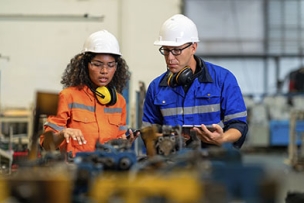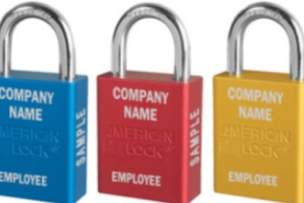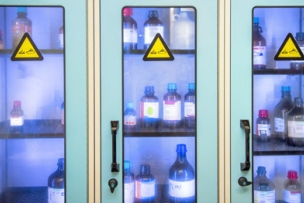You look across your shop’s safety PPE supplies.
Gloves? Check.
Eye protection? Check.
Earmuffs? Check.
Protective clothing? Check.
Looks good.
But does it? Let’s go back to that last item on the list.
Sometimes, manufacturers assume that one type of protective clothing will meet all their workers’ safety protection needs.
Maybe you only occasionally work with hazardous materials or you invested a lot in the clothing you have. But is it right for the job?
Here’s how to match the protective clothing to the jobs on your shop floor—based on the danger of chemical exposure.
There are four levels of protection when it comes to handling metalworking fluids and chemicals in manufacturing—A, B, C and D. OSHA has defined these PPE levels.
PPE Levels: Level A: Cover Every Inch
When even the slightest exposure can do harm, you need a fully encapsulating, chemical- and vapor-protective suit.
You will need to compare suit permeation and penetration ratings for the chemicals your workers are using. The higher the manufacturer permeation rating the longer the suit will last before penetration occurs and the suit fails.
For Level A protection, you’ll need to add:
• A positive-pressure, self-contained breathing apparatus or positive-pressure, supplied-air respirator
• Inner and outer gloves with chemical resistance
• Chemical-resistant boots, with steel toes and shanks
PPE Levels: Level B: Safeguard the Lungs
If a chemical requires the highest level of respiratory protection but exposure danger to skin and eyes is limited—that’s Level B.
You’ll want overalls paired with a long-sleeved jacket, coveralls, a hooded two-piece chemical splash suit, or a hood and apron. All need to be chemical-resistant.
Disposable chemical-resistant coveralls are another option.
You’ll need a few other items for Level B too:
• Most obviously, a positive-pressure, self-contained breathing apparatus or positive-pressure, supplied-air respirator
• Chemical-resistant outer and inner gloves
• Chemical-resistant boots, with steel toes and shanks
PPE Levels: Level C: Protect Against the Known
If skin and eye contact are unlikely, and you have concentration data on the chemicals you use—measured regularly—then you need Level C gear.
Clothing-wise, it’s comparable to Level B—chemical-resistant one-piece coverall, hooded two-piece chemical splash suit, hood and apron, or disposable coverall.
You’ll also still want those chemical-resistant outer and inner gloves, and boots.
The big difference? Respiratory protection. It’s less demanding because you know your chemical concentrations—so use a full-face or half-mask, air-purifying respirator.
But don’t be lax because you’re used to working with particular chemicals. Periodic checks of concentration levels are a must.
If you change machining techniques or begin working with new chemicals, be sure to reassess your clothing.
PPE Levels: Level D: Avoid Nuisance Contamination
To avoid contact with harmless chemicals, you’re at Level D.
These disposable items—coveralls, pants with tops and shoe covers—protect your workers’ own clothing.
Depending on your machining work, gloves, boots, earplugs and eye protection might still be needed. Always evaluate the work and add additional PPE as appropriate.
And, if there is a chance of respiratory or skin hazard at your site, you need to move up to chem suits on one of the higher levels.
Why? Because Level D clothing has low permeation ratings and intolerable penetration times (possibly seconds) for protecting your workers from hazardous chemicals.
For more expert advice on how to ensure your shop’s safety, visit: MSCdirect.com/BetterMRO/safety.






Talk to Us!
Leave a reply
Your email address will not be published. Required fields are marked *